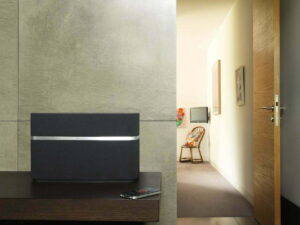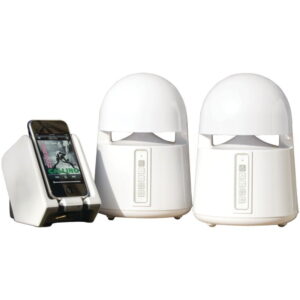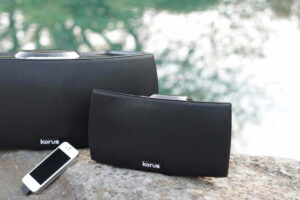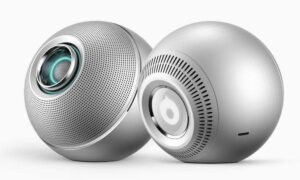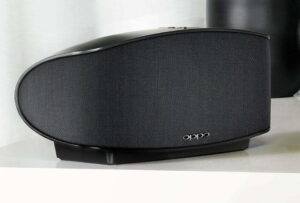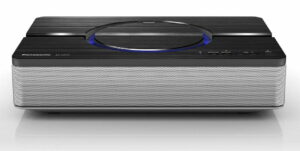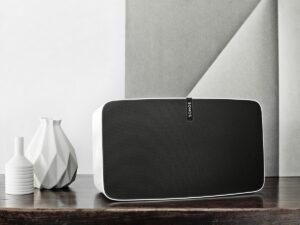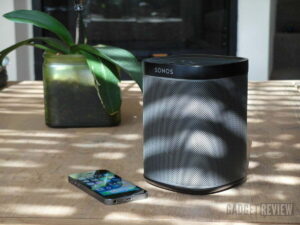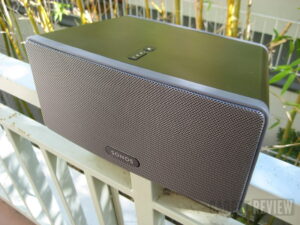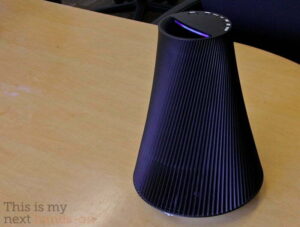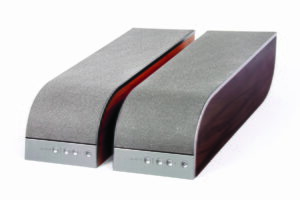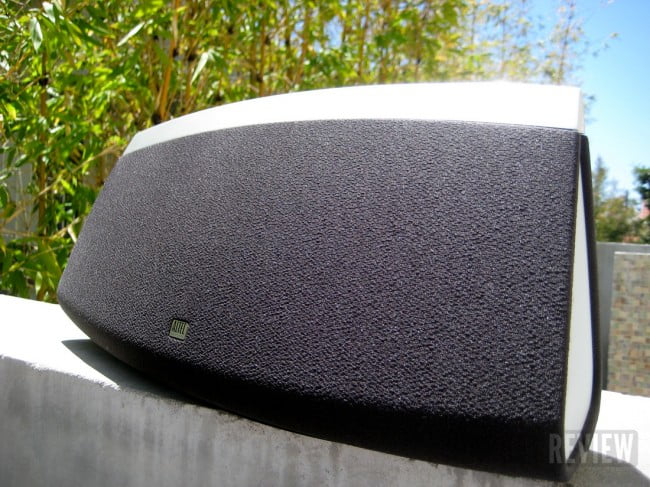
Altec Lansing’s InAir 5000 could easily be confused for their Live speaker that has yet to be released. It’s an easy mistake to make since they look exactly the same and are top-rated Bluetooth speakers. In fact, before my test unit arrived at my doorstep that’s exactly what I thought I was getting. Initially, I was a bit disappointed, that is until I plugged it in and fired up some tuneage.
So that said, the InAir 5000 has a very unassuming facade. It appears to be yet another speaker, but hidden beneath its exterior is a set of woofers that can deliver a serious walloping to any music that stands in its way. There are two tweeters and two mid-range woofers that are both powered by 20 watts of power. There is also a subwoofer powered by a 40-watt amp. All this is packed into an unconventionally shaped box that bears a coned-shaped profile. That said, there aren’t a myriad of buttons or options when it comes to the InAir 5000. The left side of the speaker houses a DIM button for putting the system to sleep, an AUX source button, an AUX input, and a 3.5mm headphone jack. The right side features the volume buttons as well as a mute button.
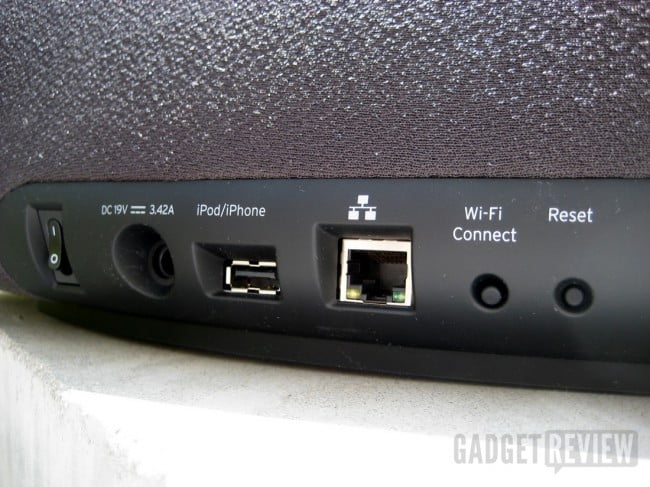
The speaker has yet to hit the retail market, which might explain why there is not an accompanying app to tweak the EQ settings since at times the bass can be thunderous and a bit overwhelming – I’m not complaining. There is however an included remote that aesthetically pairs well with the InAir 5000 as it sports a brushed aluminum facade. Needless to say, I didn’t really use the remote since this is an Airplay enabled speaker, which means the source of the music acts as the remote, at least for controlling volume and what track is playing. Nevertheless, it’s a nice addition and if anything speaks to the InAir 5000’s opulence. Check out the Amazon Echo Review…1.5 Years Later for a Bluetooth speaker that has active voice control.
For other great wireless speakers, read our reviews on the Avantree SP850 and the Beats Pill+ speaker.
Hidden underneath the front portion of the OnAir 5000 is an LED light that glows according to its connectivity status. A solid blue indicates when the OnAir 5000 has joined the wireless network, while a flashing purple LED indicates that it is not paired. The back of the unit plays host to a power switch, a WiFi connect button when you’re ready to pair it to your wireless network, a reset button to clear the stored wireless info, a USB port, and an Ethernet port. There is no battery support, but that’s not too surprising since Altec Lansing addresses this shortcoming in the form of their other, smaller speakers which I reviewed earlier this year (IMT630 review and InMotion Air review).
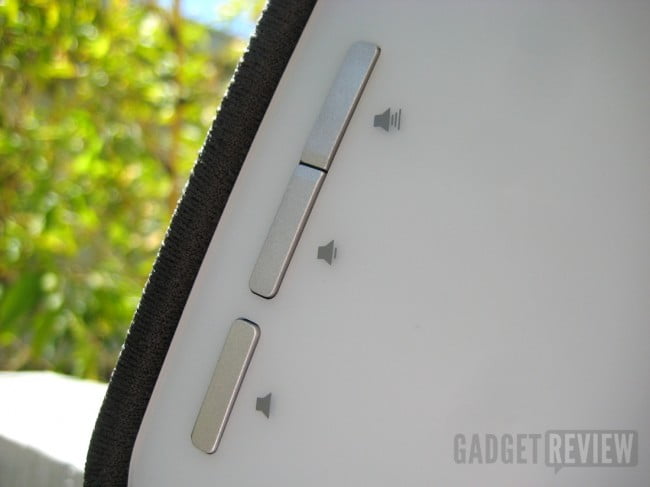
Altec Lansing suggests that you utilize their app to get the speaker connected to your home’s wireless network, as this is a wireless speaker without surround sound. This method requires that you plug your iPhone directly into the InAir 5000. I didn’t have my iPhone’s USB cord handy and nor do they include one in the box. Alternatively, you can set up the InAir 5000 using your computer. This method involves entering a designated IP address (192.168.1.12) into your browser once you’ve selected the InAir’s signal from your computer’s WiFi menu. There you can add your home’s WiFi network by selecting it from the list of available routers and entering your router’s password. Fortunately, this same process can be applied to the iPhone, which I found to be faster and less cumbersome since I didn’t have to search for a cord or download an app. So even though I didn’t use Altec’s accompanying app to set up the InAir 5000 I found the process to be simple enough.
Once the InAir 5000 has been added to your home’s network you can playback music from virtually any Apple or Airplay compatible device. Airplay in my experience can be a bit finicky, as it’s known for dropping the signal and occasionally interpreting playback with the occasional network hiccup. As with all Airplay devices, there is a slight delay between the source device and the receiving speaker, so in terms of responsiveness, the InAir 5000 is on par with other Airplay compatible speakers. However, unlike one of iHome’s latest Airplay speakers, the iW1, that I reviewed last year, which suffered from a fair bit of dropped music, the InAir 5000 very rarely dropped the audio signal and was able to hold onto my router’s network info without the need to re-enter the password or select the router’s SSID.
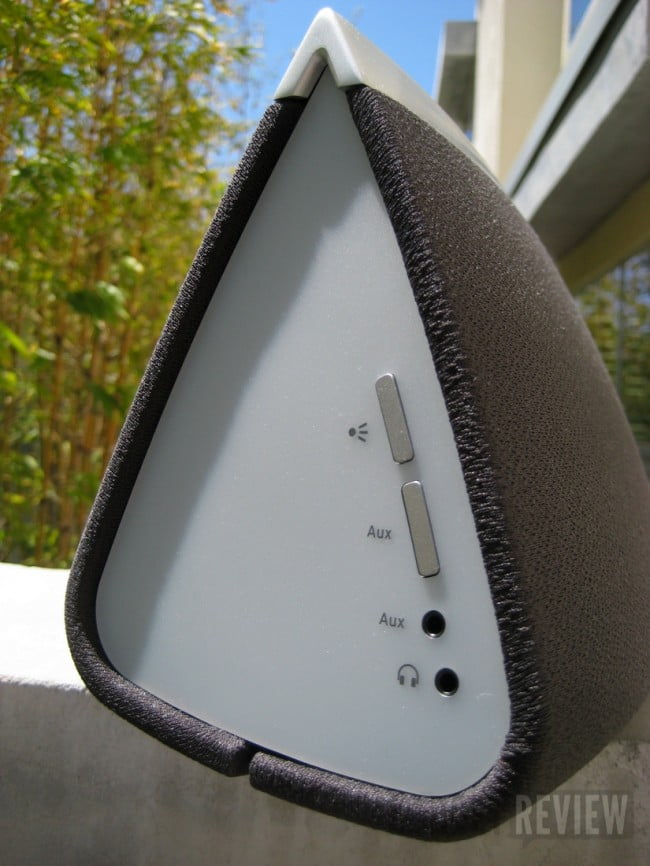
The InAir 5000’s entire facade is very sleek and minimalist in design, like the Bluesound Pulse 2i Soundbar. But don’t be fooled, it’s solid in your hands (as in heavy; 8.5lbs), which is a reflection of its internal components and based on my testing is nothing short of stellar. You may want to go through our Aether Cone review for a much more portable Bluetooth speaker. As always I like to throw a wide variety of music genres at speakers to see how they hold up on the EQ spectrum. First off, the InAir 5000 has got some serious bass. It’s thunderous and as I mentioned earlier it sometimes could be a bit overwhelming for anyone looking for a more subtle approach. Amplitude is no problem and nor is fidelity, even at higher volumes, though Altec Lansing has incorporated some DSP magic at high volumes that automatically tone down the bass and in turn, negates distortion. However, at high volumes, above 80%, bass drops so significantly that the spectrum of sound is narrowed, resulting in a bit of a tinny sound. So, after varying the volume from 0-100%, I was able to determine that the sweet spot for the InAir 5000 is somewhere between 60 to 80%, resulting in a well-balanced sound. Nonetheless, a bit of a disappointment since I would have liked to have seen a bit more resilience from the InAir 5000 at higher volumes, though that isn’t to say I would heavily discount the quality of the speaker. After all, I’d rather clean and slightly tinny sound over distorted and unbearable audio.
[nggallery id=242]
Bottom Line: Serious wireless speaker for any Apple devotee. However, at above 80% amplitude bass begins to diminish due to Altec’s digital signal processing to avoid distortion.
Editor’s Rating:
[rating:4/5]
Great
Pros:
- Massive bass
- Airplay wireless playback
- Sleek and unique design
Cons:
- Expensive; $499
- DSP reduces bass quite significantly at high volumes
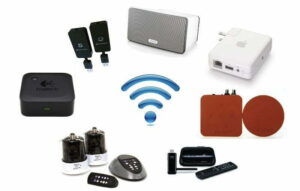
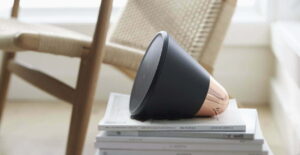


![Best Wireless Speakers in [year] 5 The top wireless speakers - not Bluetooth.|A top wireless speaker from sonos](https://www.gadgetreview.dev/wp-content/uploads/best-wireless-speaker-300x169.jpg)
